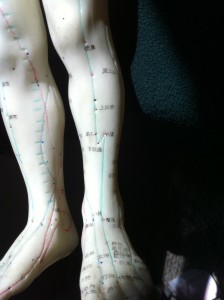
1. Consume neutral, nourishing foods. The majority of food consumed should fall into the neutral range of the continuum, which means vegetables and proteins like legumes, whole grains and some meats. Most of the foods in this category have a “sweet” flavor according to traditional healing systems classification of foods. Sweet flavored foods are deeply nourishing (and are often what the body needs instead of sweets or carbohydrates like breads or pasta).
2. Be mindful of foods that dampen digestion. Foods that have a cooling and dampening effect on the body can reduce the body’s ability to digest and assimilate your food. These foods include: raw foods, ice cream and frozen foods, sugar (especially white refined sugar), soy products (unfermented), floury products, and dairy products. This is especially important in winter when your body is adjusting to the colder external temperatures or when you are sick or have diminished energy.
3. Give your food your full attention. Remember that the body has to digest everything your experiencing in that moment, including your food, your reading material, or your emotions. You greatly help your body by giving it a space to do the work of digestion and not distracting yourself trying to do too many things at once.
4. Have a moment of gratitude for food before eating it. Before you eat take a moment of gratitude for your food and welcome it into your body. We recommend simply smiling at your food before eating it. Everything loves a smile!
5. Limit flour products (anything with flour). Flour creates glue in the digestive tract. You can switch out pasta to quinoa or brown rice pasta or whole grains such as quinoa, barley, or amaranth.